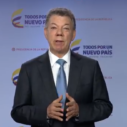
Search
2017 UNGA | High-Level Side Event: Using the Multidimensional Poverty Index to Track Progress in the SDGs
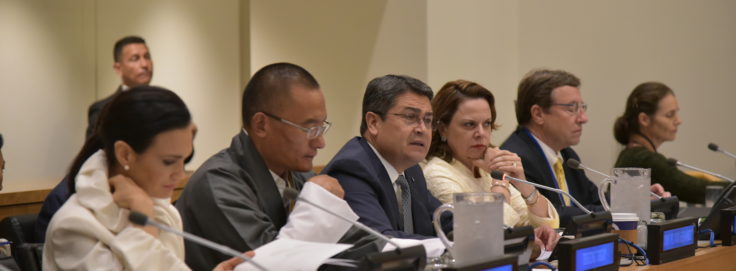
Side event at the UN General Assembly, New York
Using the Multidimensional Poverty Index to Track Progress in the SDGs
19 September 2017, Conference Room 2, 11:00am-1:00pm
This side event showcased how the Multidimensional Poverty Index (MPI)—which reveals in stark detail the overlapping deprivations experienced by poor people—can energize a coordinated, effective, and multi-sectoral attack on poverty in all its dimensions, thus helping to make visible the connections across the SDGs as part of a poverty reduction strategy that aims to ‘leave no one behind’. High-level participants from 18 countries and international institutions highlighted their experiences or plans for developing and using MPIs to tackle poverty and track progress across the SDGs.
The event was organized by the Government of Honduras on behalf of the Multidimensional Poverty Peer Network (MPPN), with the support of the Oxford Poverty and Human Development Initiative (OPHI).
The discussion was fast-paced and substantive. President Juan Orlando Hernández of Honduras called for including the Global MPI as a Tier 1 indicator in the SDGs to compare progress in poverty eradication across regions. Achim Steiner of UNDP detailed the importance of connecting research on poverty to policymaking. Prime Minister Tshering Tobgay of Bhutan spoke about the use of new data sources for multidimensional measures. President Juan Manuel Santos of Colombia shared how Colombia uses the Multidimensional Poverty Index for public policy that reduces poverty and promotes peace. Ángel Gurría of OECD described the MPI as a GPS that can help navigate the SDGs. President Enrique Peña Nieto of Mexico explained how Mexico uses multidimensional poverty measures to support their rights-based approach to social policy. Vice-President Ana-Helena Chacón of Costa Rica elaborated on the public-private partnership that supports Costa Rica’s MPI. Vice-President Isabel de Saint Malo de Alvarado of Panama detailed the importance of using multidimensional poverty as a complement to income poverty.
Ahmed Aboul Gheit of the League of Arab States (through Hossam Zaki) provided an overview of the upcoming Arab Report on Multidimensional Poverty, the first regional measure of its kind. Minister Jeff Radebe of South Africa linked multidimensional poverty measures to improved decision-making and more effective policies. Minister Ghada Waly of Egypt introduced Egypt’s work to develop an MPI and use the framework to guide social policies. Undersecretary Adoracion M. Navarro of the Philippines affirmed the Philippines’ commitment to better understanding the interrelated dimensions of poverty. Senior Secretary Shamsul Alam of Bangladesh discussed plans to use an MPI to support Bangladesh’s transition to a middle-income country.
Mohamed Ali Alhakim of UN-ESCWA announced the launch of the Arab Report on Multidimensional Poverty and presented its key findings on the composition of poverty in the region. Carin Jämtin of Sida explored the role of the Multidimensional Poverty Peer Network as a forum for exchanging experiences using multidimensional measures. Thomas Gass of UN-DESA highlighted the importance of focusing on the complex interlinkages between the multiple dimensions of poverty. Laurence Chandy of UNICEF elaborated on the usefulness of multidimensional poverty measures to tackle the multiple deprivations that affect children. Carolina Sanchez-Paramo spoke about the World Bank’s approach and innovation in multidimensional poverty monitoring globally. Sabina Alkire of OPHI thanked the speakers for presenting a wide variety of means for using MPIs to more effectively reduce poverty and ‘leave no one behind.’
The event was notable for the breadth and depth of participation from speakers and the engagement of the audience. It clearly demonstrated the sustained interest in multidimensional poverty measurement and the usefulness of the Multidimensional Poverty Index for a wide variety of applications related to the SDGs and poverty reduction, helping to ensure that no one is left behind.
Highlights from the discussion included:
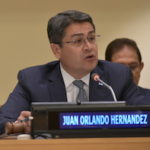 H.E. Juan Orlando Hernández, President of Honduras
H.E. Juan Orlando Hernández, President of Honduras
“As we all know, the problem of poverty ranks high on the government agendas of developing countries. My country, Honduras, is no exception. For us, it is a crucial issue. We must overcome the structural conditions that create and perpetuate poverty because they exclude thousands of people in terms of lack of access to goods and services that would enable them to live a dignified life.”
“I want to express the support of Honduras to the initiative of using the Global MPI as a tier 1 indicator to be included in the Sustainable Development Goals and to measure, at the national level, poverty reduction in all its dimensions. The Global MPI would provide a comparison mechanism on poverty eradication progress among countries.”
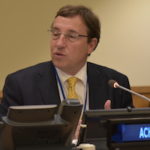 Mr. Achim Steiner, Administrator, UNDP
Mr. Achim Steiner, Administrator, UNDP
“The Multidimensional Poverty Index clearly has been embraced by so many as both a methodological advancement, but in some ways also a broadening of our aperture.”
“I want to commend [OPHI]… for being not just an example, but an inspiring example, and an example of leadership in the academic world to reach out to practitioners, to policymakers, in order to allow us to understand that we’re not studying the same people from two parallel universes.”
“For us, as part of the UN system, it is a privilege to be part not only of this conversation, but to also be at the forefront of ensuring that Agenda 2030 and the Sustainable Development Goals never forget that the departure point must always be the poverty of those who have been left behind. And that is where we must begin with our work.”
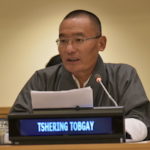 H.E. Dasho Tshering Tobgay, Prime Minister of Bhutan
H.E. Dasho Tshering Tobgay, Prime Minister of Bhutan
“In Bhutan, the national MPI is also used as a policy tool and used as a basis to allocate resources across sectors, our districts, and our villages effectively. We have used it to identify people’s needs for infrastructure and social services in the remotest areas. And we blend the MPI data with photographs, GPS information, and administrative information, making the best use of technology to fight poverty.”
“Going a step further, just this year, we included MPI in our national census, so that actual MPI at the household level can be measured. Again, this will enable the government to identify the poorest households for targeted poverty interventions.”
“Alongside the MPI, we also use the same underlying methodology to measure the nine domains of Gross National Happiness.”
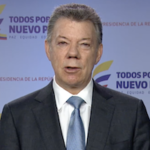 H.E. Juan Manuel Santos, President of Colombia
H.E. Juan Manuel Santos, President of Colombia
“Colombia lives in hopeful times. Driven by the end of the conflict with FARC and the consolidation of peace, we are walking a path, without return, to prosperity and development. In this process, marked by major and crucial changes to our future, the Sustainable Development Goals are our road map and the Multidimensional Poverty Index is a very useful vehicle, very useful for reaching our destination.”
“We are pioneers at a global level in the implementation of the Multidimensional Poverty Index, a tool that has allowed us to formulate and follow-up more effectively on our public policies against poverty. We no longer act with isolated programs. We are attacking this problem in all its dimensions. We are looking for big advances, ambitious advances, and we know that these are only possible if we understand the roots of poverty and the many faces that inequity has in our societies.”
“Peace must be synonymous with development, of more and better opportunities, of a dignified life for all Colombians. It is a huge task; it is a very difficult but exciting task. It is a crucial task for our future.
Video available here.
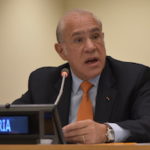 Mr. Ángel Gurría, Secretary-General, OECD
Mr. Ángel Gurría, Secretary-General, OECD
“I have often spoken of the need for a GPS to make sense of the complexity of the Sustainable Development Goals, to put the right data at our fingertips and help policymakers take the best decisions. I believe that today’s discussion on multidimensional poverty and the work being spearheaded by our friends at Oxford, is one important contribution to this GPS.”
“Fighting poverty means accounting for a range of needs: access to quality education, healthcare, the availability of clean air and water, the support of the community and people’s own evaluations of the quality of their lives.”
 H.E. Enrique Peña Nieto, President of Mexico
H.E. Enrique Peña Nieto, President of Mexico
“In 2004, the General Law of Social Development was approved to raise the standard of what a “dignified life” should be. This represented a profound change in how poverty is conceived and measured; and, at the same time, it created a real State policy to fight against poverty. Poverty was no longer defined as a condition related exclusively to insufficient income and started to be seen as a multidimensional phenomenon, incorporating social rights, such as food, access to health and social security services, education, as well as basic services and quality of housing. The importance of this new approach is clear: the only way to end poverty in a comprehensive way is for each person to fully exercise all those rights.”
“The methodology for measuring multidimensional poverty that Mexico developed, either by itself or tailored to each country’s priorities, can be very useful to guide each nation’s efforts towards the Sustainable Development Goals.”
Video available here.
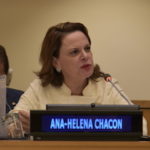 H.E. Ana-Helena Chacón, Vice President of Costa Rica
H.E. Ana-Helena Chacón, Vice President of Costa Rica
“As the President of the Presidential Social Council that is in charge of the poverty reduction strategy, I have always said that this is an ethical decision that any government of the republic should take. This is initiative the work with people who are more deprived.”
“We are the first country in the world to have a public-private partnership that has helped us to implement the Multidimensional Poverty Index. This alliance with Horizonte Positivo, which brings the best of the Costa Rican private sector, has facilitated to a great extent this process. In addition, we are integrating the Multidimensional Poverty Index to the national development plan and for this reason we are the first country to base the national budget on the MPI. This means that, with the same resources, we can identify where the deprivations are so that we focus our budget on them.”
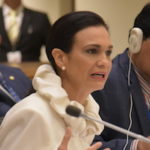 H.E. Isabel de Saint Malo de Alvarado, Vice President of Panama
H.E. Isabel de Saint Malo de Alvarado, Vice President of Panama
“There is consensus that poverty is a multidimensional phenomenon. The Sustainable Development Goals demand that countries fight poverty in all its forms and dimensions to leave no one behind. Panama joined the group of countries that are implementing a Multidimensional Poverty Index, which has been adapted to national priorities.”
“The main purpose of the MPI is to be able to identify and measure the incidence and intensity of the main mon-monetary deprivations that are affecting the people of Panama, using this as a complement to income poverty, and, in the process, re-orienting social policy so that we can be more effective in poverty reduction in an integral way.”
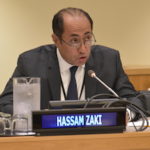 H.E. Ahmed Aboul Gheit, Secretary-General, League of Arab States (delivered by Hossam Zaki, Assistant Secretary-General, League of Arab States)
H.E. Ahmed Aboul Gheit, Secretary-General, League of Arab States (delivered by Hossam Zaki, Assistant Secretary-General, League of Arab States)
“I would like to stress, obviously, the importance of the ongoing collaboration between the League, its UN partners, and the University of Oxford, who have jointly held a series of high-level workshops in various Arab countries on capacity building and the employment of the MPI, using the methodology of the Oxford Poverty and Human Development Initiative (OPHI). The League of Arab States will soon be crowning this collaboration with OPHI through the launch of the Arab Multidimensional Poverty Report, the first regional report of its kind since the adoption of the SDGs.”
“The report will provide an in-depth analysis of poverty in its multiple dimensions and offer policy recommendations that need to be taken to address their commensurate challenges. It will also present a comparable index across Arab countries of both household poverty and child poverty and provide concrete measures in the areas of health, education, and living standards, in particular for children, the elderly, and people with disabilities.”
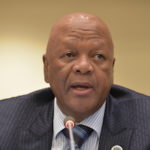 H.E. Jeff Radebe, Minister in the Presidency for Planning, Monitoring and Evaluation, South Africa
H.E. Jeff Radebe, Minister in the Presidency for Planning, Monitoring and Evaluation, South Africa
“Why is multidimensional poverty as an approach pragmatic and practical in guiding policy? We have noted that multidimensional poverty measurement provides a very rich source of policy-relevant information. This also places critical decision-makers in an eminently better position to understand how poverty across space and time is impacted and what aspects of poverty are impacted the most. So, for example, we ask: is it headcount, is it intensity, or is it both?”
“As policy- and decision-makers, using a multidimensional poverty approach has certainly empowered us to make more strategic, evidence-based choices and decisions. It helps in formulating coherent policy actions and interventions, including action sequencing. This leads to ensuring that targeted interventions that address the poor can be undertaken, and resources can reach those in the greatest of need. Multidimensional poverty presents us an exceedingly useful tool that can inform not only how we progress with implementing United Nations’ 2030 Sustainable Development Goals, but also link our own respective national development plans and frameworks in ensuring that we work better together in eradicating poverty in all its forms everywhere. And indeed, we are now better equipped to leave no one behind.”
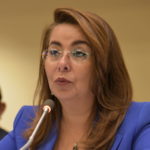 H.E. Ghada Waly, Minister of Social Solidarity, Egypt
H.E. Ghada Waly, Minister of Social Solidarity, Egypt
“In Egypt, we are indeed en route to implementing the MPI that was developed by Oxford, which we find is a very important tool that will help government to bring together the framework to address issues of poverty.”
“Poverty in Egypt is not an issue of income and expenditure only, but it has a multidimensional aspect and nature.”
“If we look at those interventions and we look at the Multidimensional Poverty Index, we find that these programs together provide us with a framework that is guided by the Multidimensional Poverty Index, but is also guided by the SDGs and the commitment of Egypt in its Strategy 2030 to address issues of poverty, issues of exclusion, issues of empowerment, of women, youth, also addressing disability with a strategy for disability and a law for the first time for the rights of the disabled.”
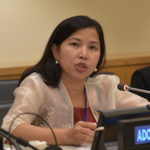 H.E. Adoracion M. Navarro, Undersecretary, National Economic Development Authority, Philippines
H.E. Adoracion M. Navarro, Undersecretary, National Economic Development Authority, Philippines
“The Philippines is one of the countries that has strongly supported the inclusion of multidimensional poverty measures in the menu of performance indicators for the post-2015 development agenda, now called the Agenda 2030. We argued back in 2013 that tracking the Millennium Development Goals’ progress based on the individual target indicators is not sufficient, because the targets are interrelated.”
“To further help policymakers craft more responsive programs, a multidimensional way of looking at poverty is deemed needed. A 2011 study on a Multidimensional Poverty Index, or MPI, in the Philippines already demonstrated useful results. The results showed the diversity of both the deprivation intensity and magnitude of poverty across geographic area and sectors in the Philippines and that much needs to be done to make development more inclusive.”
“Currently, the methodology for the computation of the MPI is undergoing intensive consultations. Moreover, ongoing studies to produce the official baseline numbers must be finished soon, and we hope to have the MPI approved by a technical committee this year… Finally, I am glad to announce that we are anticipating the release of the country’s first official MPI next year, 2018.”
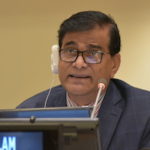 H.E. Shamsul Alam, Member (Senior Secretary), General Economics Division, Bangladesh Planning Commission
H.E. Shamsul Alam, Member (Senior Secretary), General Economics Division, Bangladesh Planning Commission
“As the government is committed to implement SDGs and aspires to do well in SDGs as it did in MDGs, multidimensional measurement of poverty will be a timely step for the country.”
“As Bangladesh transitions into a middle-income economy, it becomes increasingly important to improve the quality of data that will inform policies and guide budget allocations, to ensure that the benefits of economic growth reaches to all. The Bangladesh 2017 Voluntary National Review in the High Level Political Forum stated its intention to introduce MPI. The motivation for adopting the MPI however is policy-related. The MPI gives much more detailed information on what policies to focus on in different regions and among different subnational groups. Finally, a national MPI can be aligned with the national plan and strategies. National plans are multi-sectoral. So the MPI is tremendously useful because for the first time it directly reflects interlinked deprivations, so helps to design multi-sectoral and integrated policies.”
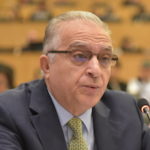 Mr. Mohamed Ali Alhakim, Executive Secretary, UN-ESCWA
Mr. Mohamed Ali Alhakim, Executive Secretary, UN-ESCWA
“In recent years, political instability, conflict, and economic and social challenges have intensified, putting a large burden on wide segments of the Arab population, causing increased poverty and vulnerability, which required urgent humanitarian support… which motivated ESCWA to develop a regional framework for collaboration to complement national efforts to reduce poverty by year 2030.”
“For the past two years, a regional partnership was established between the League of Arab States, OPHI, UNICEF, ESCWA, and global experts to provide vital and actionable information to Arab decision-makers on poverty in many dimensions by developing a methodology to measure multidimensional poverty in the Arab region.”
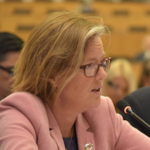 Ms. Carin Jämtin, Director General, Sida
Ms. Carin Jämtin, Director General, Sida
“Measuring multidimensional poverty is a prerequisite for adjusting policies and strategies both at the global, regional (as was mentioned before), as well as at the national level. The global discourse on multidimensional poverty is crucial for measuring progress towards the SDGs, and we are looking forward to continuous dialogue with all our partners on the best ways forward.”
“We are excited that over 50 governments thus far have accepted the challenge to join the Network, to explore multidimensional poverty in their constituencies. This will allow for policies and strategies to be adjusted to country contexts in order to maximize effects on poverty.”
“While multidimensional poverty measures have gained a lot of ground these past years, Agenda 2030 obliges us to get even better at measuring progress towards eradicating multidimensional poverty. Sida is pleased to engage in this work together with the members of this Network… Together we can continue this journey to eradicate poverty in all its forms everywhere.”
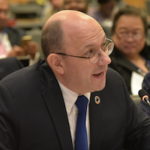 Mr. Thomas Gass, Assistant Secretary General for Policy Coordination and Inter-Agency Affairs, UN-DESA
Mr. Thomas Gass, Assistant Secretary General for Policy Coordination and Inter-Agency Affairs, UN-DESA
“As we have heard through inspired examples today, the inter-related nature of the 2030 agenda offers a critical opportunity to address the many deprivations that poverty encompasses, whether through income, hunger, poor health, social inclusion, lack of voice, lack of legal identity, or lack of security.”
“Tackling the multidimensional nature of poverty and focusing on its inter-linkages across the different dimensions of sustainable development can help us to truly root out this phenomenon within our lifetime.”
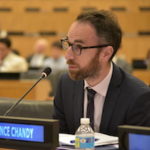 Mr. Laurence Chandy, Director of Data, Research and Policy, UNICEF
Mr. Laurence Chandy, Director of Data, Research and Policy, UNICEF
“I arrive to this topic as an advocate of multidimensional poverty measures, including MPI, for three reasons. The first is the SDG relevance. Multidimensional poverty measures are uniquely equipped to identify overlapping deprivations and the interlinkages between those deprivations. They provide the means to identifying and focusing on those left behind. Secondly, multidimensional poverty measures are uniquely equipped to respond to children. We all here recognize that poverty has different dimensions and manifestations. Multidimensional poverty measures embrace this, but, arguably, these dimensions and manifestations are especially diverse in the case of children. Thirdly, multidimensional poverty measures are action relevant in identifying where and what interventions are needed.”
 Ms. Carolina Sanchez-Paramo, Senior Director for Poverty and Equity Global Practice, World Bank
Ms. Carolina Sanchez-Paramo, Senior Director for Poverty and Equity Global Practice, World Bank
“I wanted to start by saying and stating again that poverty is intrinsically multidimensional, not because I think anybody in this room needs to be convinced of that, but because I am very aware of the fact that I’m here representing an institution whose two institutional goals—poverty reduction and shared prosperity—are anchored on monetary measures of welfare… I think it’s important to recognize that we do realize that the world doesn’t end there and that when we talk about poverty, we need to have a broader perspective.”
“I wanted to echo what the representative from Sida said in terms of being ambitious about bringing in other dimensions that we think are important for welfare, such as security, but that we don’t really have much information. That’s where we want to push the envelope a little bit, but, as I say, this is the beginning of a conversation.”
The video of the event is available here:
President of Colombia Juan Manuel Santos:
President of Mexico Enrique Peña Nieto:
Photo Gallery
Important Information
Date: 19 September 2017
Time: 11am – 1pm (Local time)
Venue: Conference Room 2, United Nations Building
Hashtag: #UNGA #MPI4SDGs
UNGA Website: http://www.un.org/en/ga/
Concept Note
Agenda
Press Release
Video
Photos
















